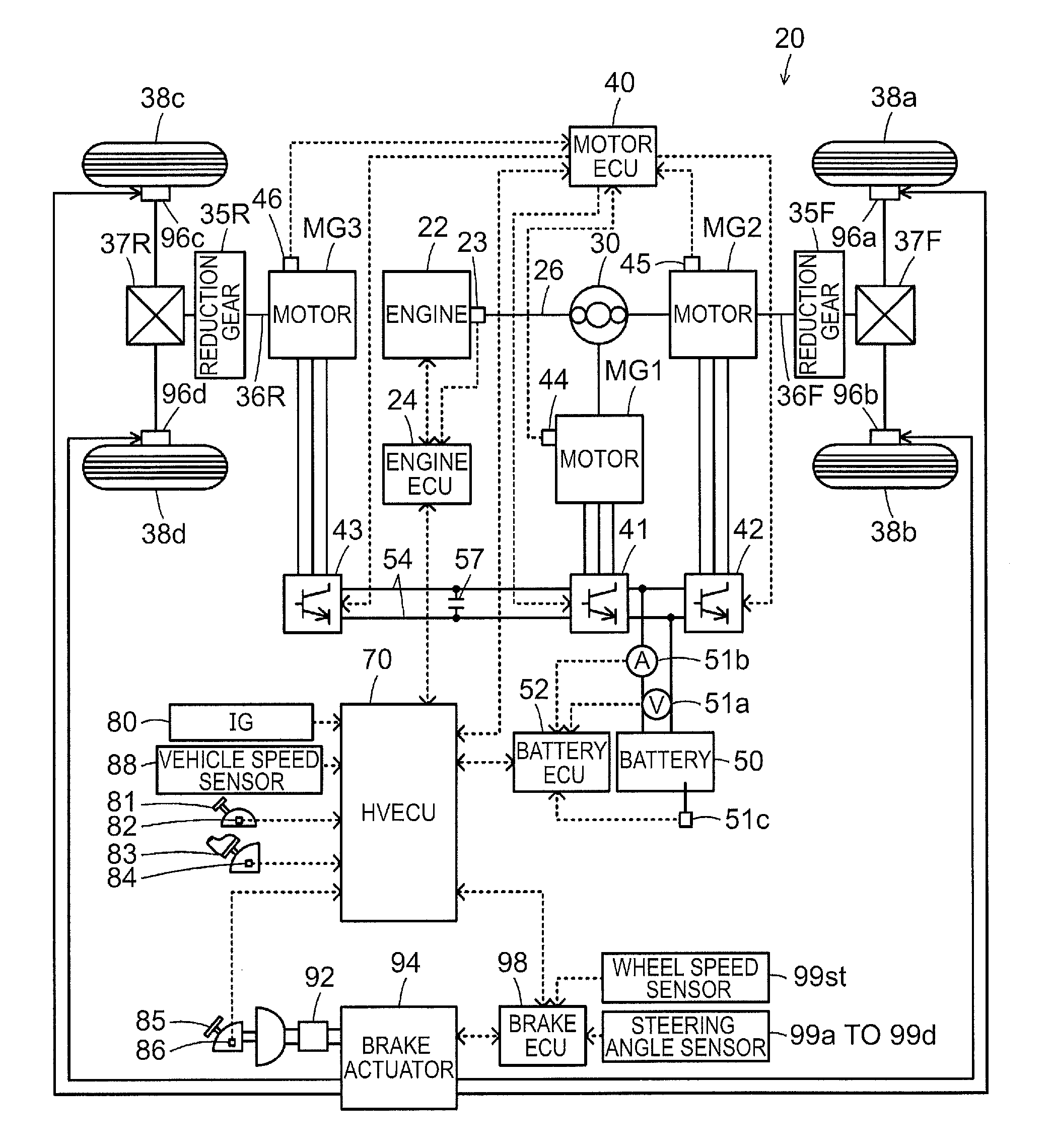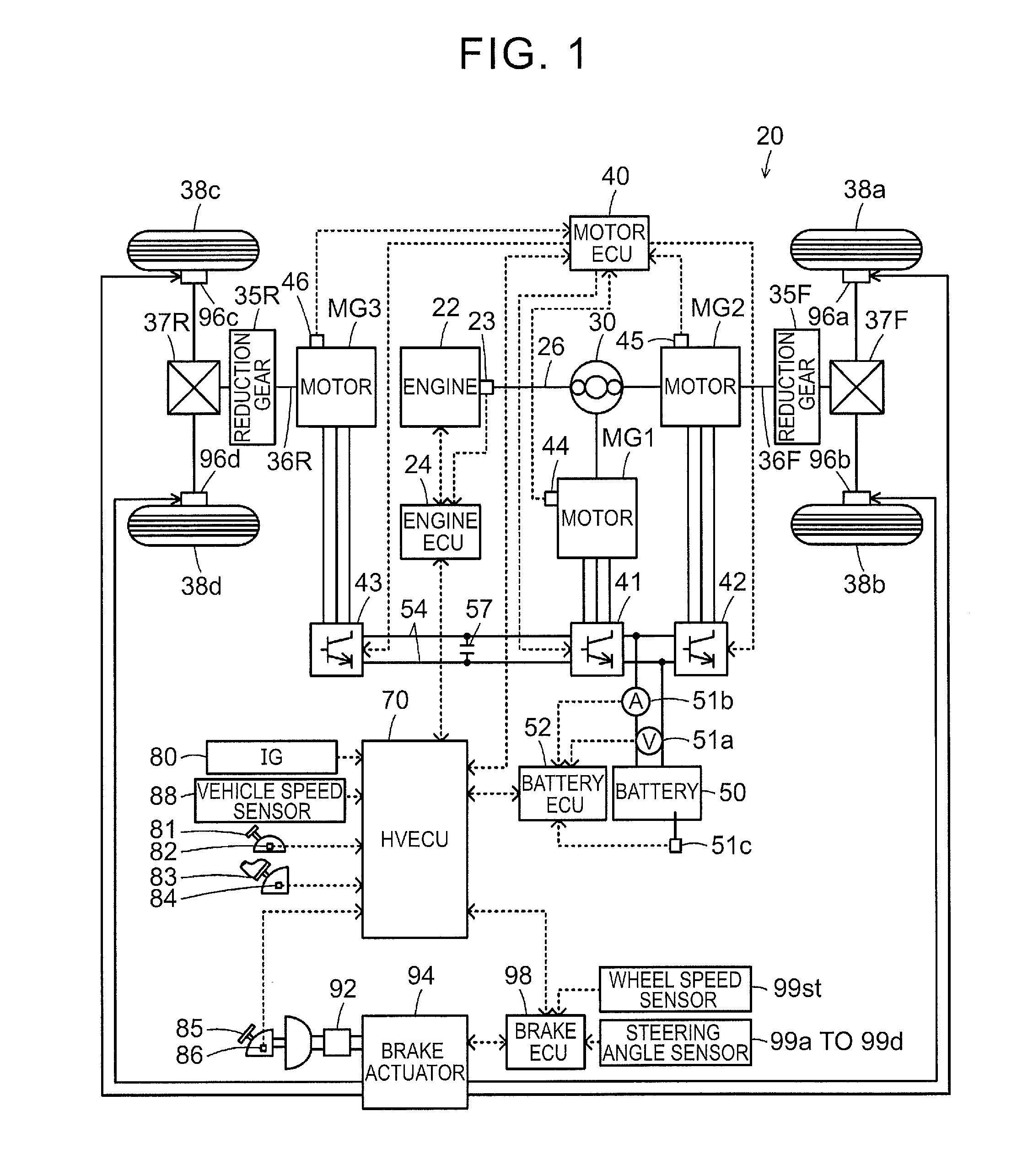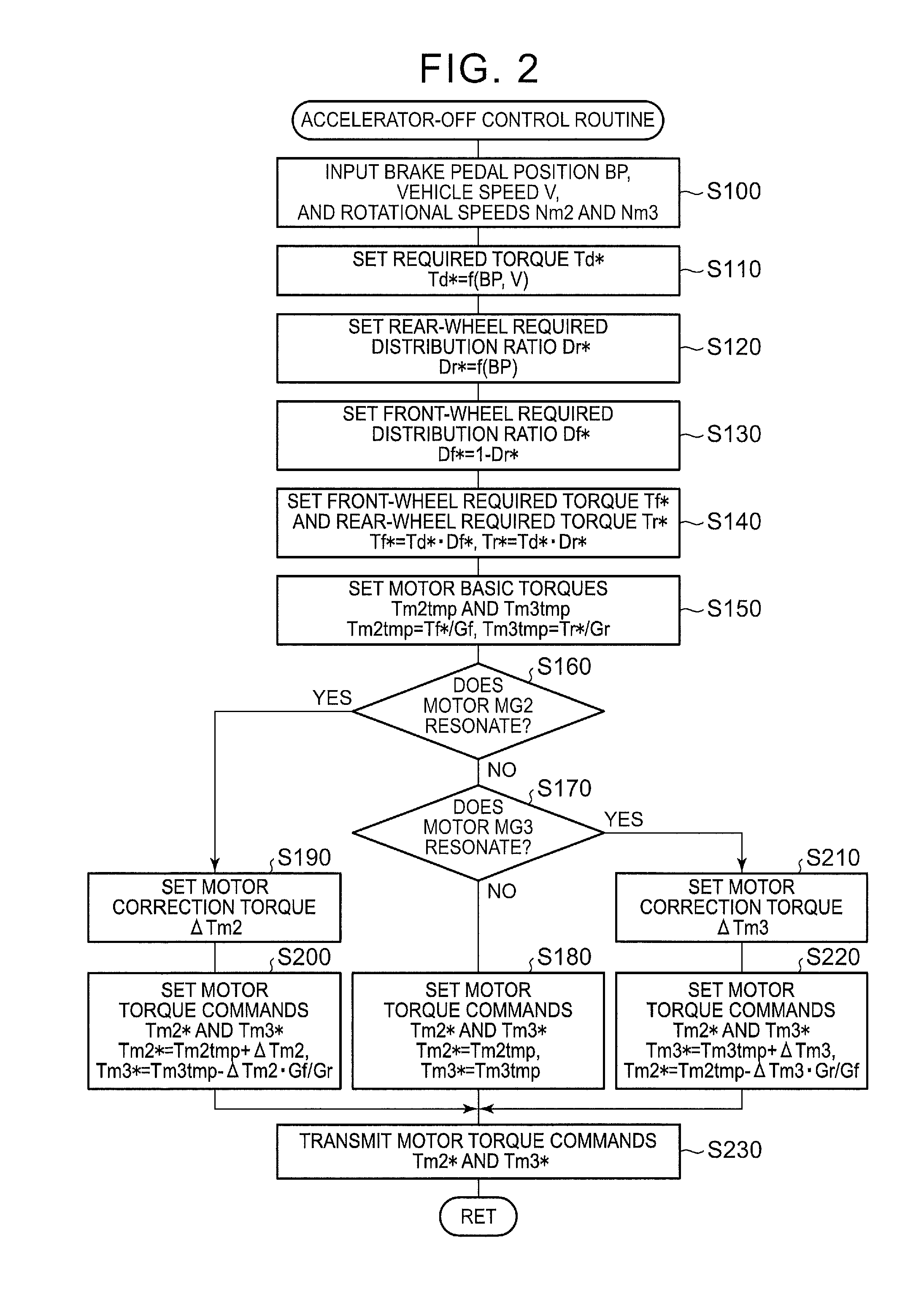Vehicle
a technology of vehicle and braking torque, which is applied in the field of vehicles, can solve the problems of deteriorating riding comfort of the driver, large regenerative origin noise, and relatively large regenerative noise, so as to reduce the braking torque of the resonance-side motor and prevent deterioration of the ride comfort of the driver
- Summary
- Abstract
- Description
- Claims
- Application Information
AI Technical Summary
Benefits of technology
Problems solved by technology
Method used
Image
Examples
Embodiment Construction
[0025]Next, the embodiment of the invention will be described using the drawings.
[0026]FIG. 1 is a block diagram showing the schematic configuration of a hybrid vehicle 20 in the embodiment of the invention. As shown in the drawing, the hybrid vehicle 20 is equipped with an engine 22, a planetary gear 30, motors MG1, MG2, MG3, inverters 41, 42, 43, a battery 50, a brake actuator 94, and a hybrid electronic control unit (hereinafter referred to as an HVECU) 70.
[0027]The engine 22 is an internal combustion engine that outputs motive power using gasoline, light oil or the like as fuel. The operation of this engine 22 is controlled by an engine electronic control unit (hereinafter referred to as an engine ECU) 24.
[0028]Although not shown in the drawing, the engine ECU 24 is configured as a microprocessor that is mainly constituted of a CPU. In addition to the CPU, the engine ECU 24 is equipped with a ROM that stores processing programs, a RAM that temporarily stores data, receive / output...
PUM
 Login to View More
Login to View More Abstract
Description
Claims
Application Information
 Login to View More
Login to View More - R&D
- Intellectual Property
- Life Sciences
- Materials
- Tech Scout
- Unparalleled Data Quality
- Higher Quality Content
- 60% Fewer Hallucinations
Browse by: Latest US Patents, China's latest patents, Technical Efficacy Thesaurus, Application Domain, Technology Topic, Popular Technical Reports.
© 2025 PatSnap. All rights reserved.Legal|Privacy policy|Modern Slavery Act Transparency Statement|Sitemap|About US| Contact US: help@patsnap.com



